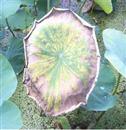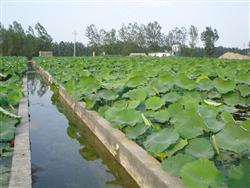Technical methods of seed selection and retention of Lotus Root

(1) selection and breeding. The selection and breeding of lotus root mainly includes asexual seed selection and sexual cross breeding. 1. Asexual selection. China is rich in lotus root germplasm resources, which provides good conditions for asexual selection. In recent years, varieties selected from superior clones include Kexuan 1, Elian 1, Zhe Hu 1, Wuzhi 2, Ganlian 85-4, Ganlian 85-5 and so on. The method of asexual seed selection is to extensively mobilize the masses in lotus root producing areas, and report individual plants with high yield, good quality, strong adaptability, strong disease resistance, extra early maturity or extra late maturity to the relevant scientific research departments or agricultural departments in time, and carry out asexual reproduction and promotion. two。 Sexual interbreeding. Sexual hybridization is one of the effective methods to cultivate new varieties of lotus root, and it has been widely used in lotus root breeding. Sexual hybridization can make full use of the excellent characters of parents and purposefully cultivate new varieties such as high yield, high quality, strong disease resistance, extra early maturity or extra late maturity. In recent years, the new varieties cultivated by sexual hybridization are Elian 3, Yang Lotus 1, Elian 4, Xiangbailian 1 and so on. (2) to keep seeds. In order to obtain high-yield and high-quality lotus root or lotus seed, the seed retention of lotus root is very important. When the lotus root leaves seed, the seed lotus root should spend the winter in the lotus root field. During the overwintering, the fields should be kept in shallow water, which should not be dry and frozen. In places where you can't always keep shallow water, cover with straw to protect against cold. Dig out the seed lotus root before planting lotus root in the second year. Each mu is reserved for planting, which can be used for 5 to 6 mu of land. When continuous cropping lotus root field leaves seeds, when picking lotus root, the method of picking eight and leaving two seeds is used, that is, 0.5 meters wide for every 2 meters wide, which is used as lotus root for next year. In the following years, the harvest and seed parts will be rotated. The planting of the reserved field is similar to that of the field production, but the planting and harvest are relatively late. After field harvest, field management should be strengthened, especially water management and pest control. The water should not be cut off in winter, and the shallow water of 3 to 5 centimeters should be kept to prevent the soil from drying and make the lotus root frozen. To harvest lotus root, you should dig along with planting in the field, be careful, keep the lotus root intact and don't break the bud head. After the planting lotus root is harvested, it should be selected once when it is planted. According to the characteristics of the variety, the lotus root is selected to be upright, enlarged and intact, with seed lotus root at the end, no diseases and insect pests and no scars. In addition, it should be carried out in the field during the growth period to remove the miscellaneous and inferior, twist the pedicel in time, crush the small buds and concentrate the nutrients on the lotus root. In order to explore the breeding technology of lotus root, Wuhan vegetable Research Institute has compared several propagation methods of lotus seed propagation, whole lotus root propagation, main lotus root propagation, seed lotus root propagation, lotus root node propagation and terminal bud propagation. Based on the observation and analysis from the aspects of yield, quality and the dynamics of growth and development, it is considered that the propagation technology of seed planting of lotus root should be promoted, and the traditional method of planting seed of main lotus root should be improved, which is a simple and convenient propagation method. Apical bud planting is a promising propagation method, but it should be matched with seedling raising technology. Seed propagation is not suitable for popularization and application in production, but it is a necessary means in breeding.
- Prev

Prevention and control of lotus root rot should be timely.
Q: the lotus root planted in my family grew very well at the beginning, but now the leaves have dried up and several drugs have not worked. What on earth is going on? What kind of medicine can be cured? At present, lotus root leaf disease is mainly lotus root rot disease, which is the first major disease in lotus root production.
- Next

Six common diseases of lotus root and their control
1. The main types of diseases from June to July are the peak growth period of lotus root and the peak period of various diseases. As an instructor of agricultural science and technology system, the prevention and control technology of lotus root disease is put forward to guide the production of demonstration households and lotus root farmers. 1, lotus root rot, also known as black root disease, lotus root.
Related
- Where is it suitable to grow horseradish in China? it is expected to see the middle altitude horseradish in Alishan.
- How to prevent tomato virus disease reasonably? (Control methods included)
- Many people like to plant towel gourd on the balcony. What are the main points of this method and management?
- What crops can chili peppers be mixed with?
- Fertilization techniques and matters needing attention in Tomato
- What are the grafting techniques for peach seedlings in spring?
- Harm and control methods of root swelling disease of Chinese cabbage
- What are the pests of sweet potatoes? How to prevent and cure it?
- Symptoms, causes and Control methods of navel Rot in Tomato
- The cause of "Cucumber rotten bibcock" in Farmers' planting Cucumber and its Control Plan

